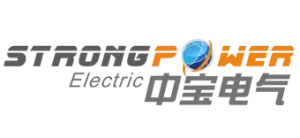What is Power Quality?
Power quality is a measure of voltage. High quality voltage is a sine wave that measures exactly what is expected of voltage and frequency. High quality power is power that delivers all the power needed without changing the voltage. In the past, people thought that the responsibility for power quality was the problem of the power company, but this is not the case. In almost all cases, the conditions that affect power quality are beyond the control of the power company.
Most power quality issues are thought to be caused by factors that affect the distribution of electricity. Lightning, line or transformer failures, and/or extremely high power demands on the grid (voltage sag) are just a few of them. However, most power quality issues are caused by changes in technology and the way people now use electricity.
Power conditioning and power quality equipment manufacturers are faced with a new set of challenges. As technology changes in the industry, so does the need to ensure that new technology does not affect old systems and cause electrical problems. Power quality issues caused by continued equipment improvements and cost reductions are forcing large critical power protection systems to examine the reasons for changes in equipment and its functions.

Why is power quality poor?
Since power quality itself is a rather complex issue, we cannot assume just one cause for poor power quality. There can be many reasons for poor power quality. Here are the different problems with power quality and the different solutions.
| DIPS or SAGS | |
|---|---|
| Symptoms | • Lighting dimming, computer lockups, relay and contactor chatter or complete dropout, equipment and system shutdowns • Spurious and unexplained alarms and shutdowns |
| Potential causes | • Starting large loads, especially large inductive • Similar operations in neighboring facilities • Short-circuit faults • Severe weather conditions |
| How to Solve | • Uninterruptable Power Supply (UPS) • Dynamic Voltage Restorer (DVR) |
| SWELLS | |
|---|---|
| Symptoms | • Overvoltage shutdowns and alarms on variable frequency drives (VFDs) and other electronic devices • Failure and damage on equipment and loads |
| Potential causes | • Fault on single phase of three-phase system • Sudden load decrease • Capacitor bank switching |
| How to Solve | • Uninterruptable Power Supply (UPS) • Dynamic Voltage Restorer (DVR) |
| UNDERVOLTAGE / OVERVOLTAGE | |
|---|---|
| Symptoms | • Overheating of equipment • Insulation failures • Performance and life time degradation on equipment |
| Potential causes | • Uncontrolled reactive power flow in transmission and distribution systems • Variations in the generation of PV and wind power systems |
| How to Solve | • Static VAR Compensator (SVC) • Static Synchronous Compensator (STATCOM) • Magnetically Coupled Reactor (MCR) • Voltage Regulator |
| VOLTAGE FLUCTUATIONS / FLICKER | |
|---|---|
| Symptoms | • Light flicker • Nuisance tripping due to misoperation of electronic devices |
| Potential causes | • Intermitted loads like electric arc furnaces and welding machines • Variations in the generation of PV and wind power systems |
| How to Solve | • Static VAR Compensator (SVC) • Static Synchronous Compensator (STATCOM) • Magnetically Coupled Reactor (MCR) • Voltage Regulator |
| TRANSIENTS | |
|---|---|
| Symptoms | • Flashover and arcing effects in distribution equipment • Damaged insulation • Failed electronics • Computer lockups |
| Potential causes | • Lightning strikes • Switching of capacitors • Reenergizing systems after a power failure • Sudden stoppage of large equipment • Dirty or worn contactors |
| How to Solve | • Surge Arresters • Isolation Transformers |
| INTERRUPTIONS | |
|---|---|
| Symptoms | • Equipment shutdowns |
| Potential causes | • Momentary loss of utility power |
| How to Solve | • Uninterruptable Power Supply (UPS) |
| UNBALANCE | |
|---|---|
| Symptoms | • Overheated three-phase motors and transformers • Overvoltage and overloading problems in neutral conductors |
| Potential causes | • Unbalanced loads across individual phases of three-phase panelboards • Unbalanced utility supply • Operation of large single-phase loads • Open-delta transformers |
| How to Solve | • Static Synchronous Compensator (STATCOM) |
| HARMONICS | |
|---|---|
| Symptoms | • Overheated line and neutral conductors • Overheated motors and transformers • Spurious and unexplained alarms and shutdowns of electronic equipment |
| Potential causes | • Nonlinear loads such as switching power supplies • Converter sections of uninterruptible power supply (UPS), VFDs and battery chargers • Welders • Arc furnaces |
| How to Solve | • Passive and Active Harmonic filters |



